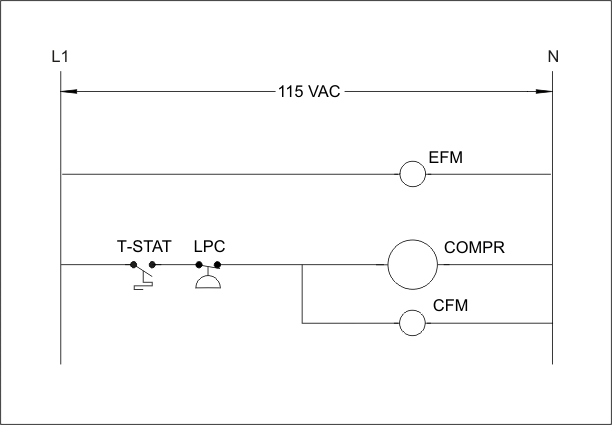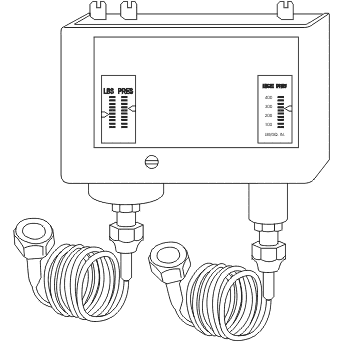
Operating and Safety Controls |
| A Pressure control can also be used as a safety control. The electrical circuitry shown below has two controls in series. Therefore, if the LPC trips, the compressor will not run
even if the T-Stat is calling. The LPC in this example is set to protect the system from a loss of refrigerant charge and is set to cut out at a pressure that is lower than anticipated
low side operating pressure. The compressor should not be allowed to operate with an undercharge as the windings can overheat and other types of damage can occur as well.
Unless there is a loss of charge the LPC will therefore remain permanently closed during all off cycles and run cycles. The LPC's contacts are therefore said to
be normally closed (NC). Small leaks cause a gradual loss of refrigerant and a LPC might only trip once in a while during the initial stages of a refrigerant leak. As time passes the
safety will trip more and more often and can eventually get to the point where the system will only run for a few seconds before cutting out. After a short time the high and low side
pressures will equalize and the system will try starting once again. This is called short cycling. It's not good for the system but is certainly better than letting the compressor destroy
itself by operating indefinitely with an undercharge or no refrigerant.
More safety controls can be added such as a High Pressure Control. If high head pressure occurs for any reason the switch will open protecting the compressor. Controls can be automatic reset or manual reset. If the manual reset type trips, a little button pops out and the unit will not restart until the button is manually reset. This is to force attention to the fact that there has been a safety trip. |

 |
An LPC and a HPC are available in a single unit called a dual pressure control. It's easy to recognize the low pressure capillary at a glance because it ties into a larger bellows assembly. The low pressure gas needs a larger bellows area to activate the linkage whereas the high pressure side exerts more force and can function properly with a smaller bellows. |
